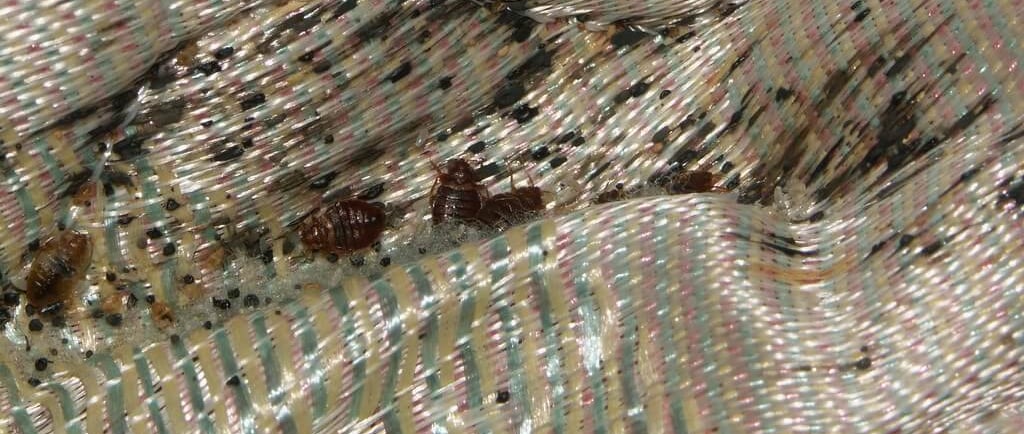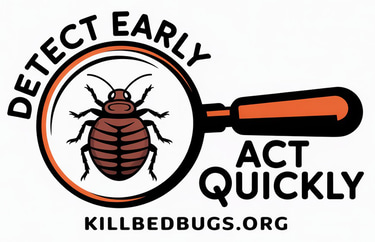How to Check for Bed Bugs: A Step-by-Step Guide
Learn how to check for bed bugs with this step-by-step guide. Spot signs early and prevent a full-blown infestation before it becomes a nightmare.
DRZ
7/12/20253 min read


Finding out you may have bed bugs can be unnerving. These tiny, elusive pests are experts at hiding and can quickly multiply if not detected early. Knowing how to check for bed bugs effectively is your first line of defense. Whether you're at home, in a hotel, or moving into a new place, this guide will walk you through what to look for, where to inspect, and how to stay ahead of a potential infestation.
What Are Bed Bugs and Why Are They So Hard to Spot?
Bed bugs are small, reddish-brown insects that feed on human blood, usually while you sleep. Adults are about the size of an apple seed, flat and oval-shaped, while nymphs are much smaller and translucent. These pests are nocturnal and prefer to hide in cracks, seams, and dark places during the day, making them particularly hard to spot.
The first signs of bed bugs often go unnoticed. A few bites here and there might be dismissed as mosquito bites or a skin reaction. But these signs shouldn't be ignored. The earlier you detect them, the easier it is to stop an infestation from spreading.
When Should You Check for Bed Bugs?
There are a few situations when you should be especially vigilant:
After returning from a trip or hotel stay
When buying or bringing home secondhand furniture
If you notice unexplained bites on your body
If you see small reddish or brownish stains on your sheets or mattress
Before moving into a new apartment or house
Even if you don’t notice any of these signs, it’s a good idea to check regularly as a preventative measure.
Where to Look: Common Hiding Spots for Bed Bugs
Bed bugs are experts at staying out of sight. They can squeeze into tiny crevices and often hide in the following places:
Mattress seams and piping
Box springs and bed frames
Headboards and footboards
Behind baseboards and electrical outlets
Inside furniture joints
Behind wallpaper and picture frames
In the folds of curtains
Start your inspection close to the bed or sleeping area and gradually work outward. Bed bugs tend to stay within a few feet of their food source—you.
Step-by-Step Guide: How to Check for Bed Bugs
Step 1: Gather Your Tools
You don’t need much to perform a thorough inspection. Here's what you'll need:
A flashlight (bed bugs love the dark)
A credit card or thin piece of plastic (to scrape along seams)
A magnifying glass (optional but helpful)
Disposable gloves
Step 2: Inspect the Mattress
Strip the bed completely and examine the mattress thoroughly:
Look along seams and piping for bugs, eggs, or dark stains
Use your plastic card to scrape along seams and release hidden bugs
Check labels and any fabric tags—bed bugs love these areas
Dark stains may indicate fecal spots, while tiny white or pale-yellow specs may be eggs or shed skins.
Step 3: Examine the Box Spring and Bed Frame
Remove the box spring and flip it upside down
Check around the edges, corners, and underside
Inspect the bed frame, especially where joints meet
Use your flashlight to check screw holes or cracks in wood
Bed bugs often hide in cracks and are very difficult to see without moving things around.
Step 4: Check Furniture and Surroundings
Inspect nightstands, dressers, and their drawers
Look behind picture frames and mirrors on the wall
Check behind electrical outlet covers (carefully)
Inspect nearby couches or chairs, especially fabric ones
You may also find cast skins, which are the exoskeletons shed by growing bed bugs. These look like tiny, pale yellow bugs but are hollow and dry.
Step 5: Check Curtains, Rugs, and Clutter
Lift the bottom hem of curtains and check the folds
Shake out and inspect rugs, especially near the bed
Sort through and inspect any clutter near sleeping areas
Bed bugs can hide in clothing piles, stacks of books, or electronics. If something is near the bed and hasn’t moved in a while, it should be checked.
Signs You Might Have Bed Bugs
Even if you don’t see actual bugs, these signs could indicate a bed bug problem:
Reddish or rusty stains on sheets or mattresses
Dark spots (bed bug excrement) that may bleed on fabric
Shed skins or pale yellow eggs and eggshells
A sweet, musty odor in heavy infestations
Itchy, red bites often in lines or clusters on exposed skin
What to Do If You Find Bed Bugs
Don’t panic. Finding a few bed bugs doesn’t mean your home is beyond saving. But you do need to act fast.
Wash and dry bedding on the highest heat setting
Vacuum your mattress, bed frame, and all affected areas
Seal vacuum contents in a bag and discard immediately
Consider mattress encasements to trap any remaining bugs
Use bed bug interceptors on furniture legs to monitor movement
Contact a pest control professional for severe infestations
There are also non-chemical treatments like steamers, heat treatments, and cryonite freezing that can be effective.
Final Tips for Staying Bed Bug-Free
Prevention is the best medicine when it comes to bed bugs. Here are a few habits that can help you avoid future infestations:
Don’t bring used furniture into your home without inspecting it
Keep clutter to a minimum, especially around beds
Use mattress protectors or encasements
Be cautious in hotels: check the bed before unpacking
Wash travel clothes in hot water as soon as you return
Knowing how to check for bed bugs puts the power in your hands. With regular inspections, you can catch a problem early and prevent a costly and stressful infestation.
Call 1-888-394-0227 (Toll Free)
Speak to a Pest Control Professional in Your Area
